FANTASTIC INTERIOR AT THE CASA ENCENDIDA – MONTEMADRID FOUNDATION
Fantastic Interior is made up of four scenes, interventions that take place throughout the year by four different artists, whose common thread is issues such as intimacy, self-care and the construction of subjectivity. Through the practice of these artists -Ad Minoliti, Marina González Guerreiro, Eva Kot'átková and Korakrit Arunanondchai-, the curator Rafa Barber Cortell invites us to think about the imaginary that has been created around the "inner world".
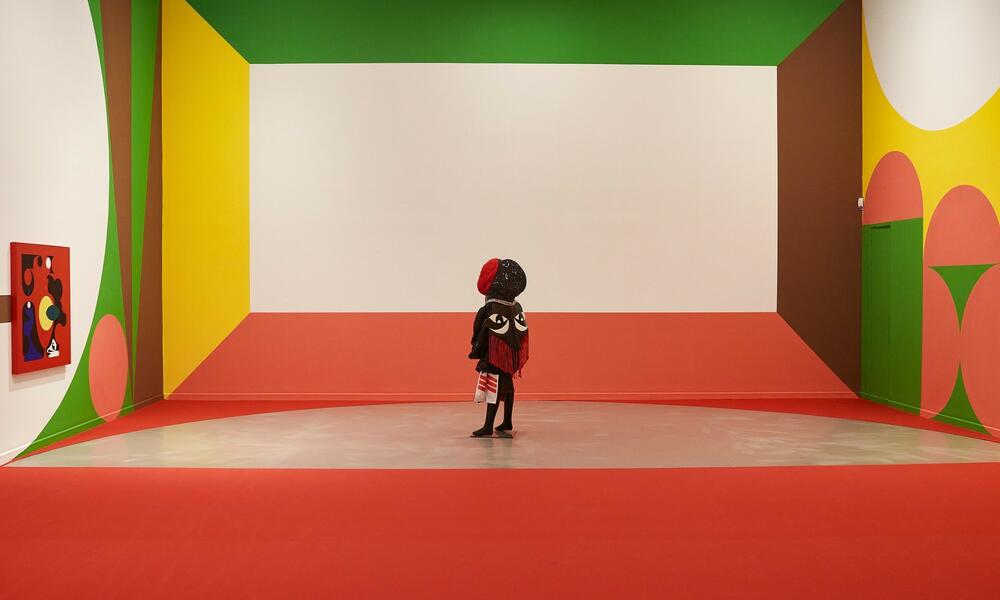
The interior is understood in this program as that space in which modernity taught us to keep delicate and vulnerable feelings, those that are not shown in public, and about which it is increasingly important to talk. Through these four scenes, as well as different activations of a performative nature and an epilogue in the form of a publication that collects the different voices that go through the process, this curatorial journey seeks to create a polyphony that, like one of those paused conversations that are held in privacy, aspires to weave a network of empathy of which the visitor can feel part.
Fantastic Interior, which takes its title from a collection of stories by various authors compiled by the fiction writer Pilar Pedraza, invites us to think carefully about what happened and what happens inside, trying to understand the evolution of the grammar of intimacy after years of accelerated writing, with artists, with art, with performance and with time.
From January 27 to March 27: Furry Tales, by Ad Minoliti (Buenos Aires, Argentina, 1980).
Furry Tales is an immersive installation that subtly navigates through the symbolic strategies that the system uses to shape us and assign us an identity since we begin to exist within a binary system.
It is a first stop on this journey through the interior, returning to the beginning, to childhood, to that starting point that later brought everything else. The exhibition imagines a childhood that does not bifurcate in two directions, but carefully searches for its options, because, as the artist says "perhaps the time has come for children to stop being the future to be able to decide their present" .
From April 20 to June 19: Marina González Guerreiro (A Guarda, Spain, 1992).
Marina González Guerreiro's work focuses on the beauty of routine moments that are sometimes not given the attention they deserve. Washing, tidying, sweeping are small acts that become central in her work and claim a relationship with objects and with time that faces, without violence, the acceleration of the present.
Issues related to the emotional grammar linked to adolescence, the change of stage or the beginning of something new, coexist with the spatial or visual references characteristic of her work. The idea of intermediate spaces that connect other spaces, such as a bridge or a window, are outlined as starting points for an exhibition in which she works from small scales to build a large installation.
-
© Korakrit Arunanondchai. Songs for dying, 2021 - HD single-channel video, color, sound. 30:18 min. Co-commissioned by the 13th Gwangju Biennale, Han Nefkens Foundation, and Kunsthall Trondheim. Courtesy of the artist; Bangkok CityCity Gallery; Carlos/Ishikawa, London; C L E A R I N G, New York / Brussels; and Kukje Gallery, Seoul.
-
Ad Minoliti, Cuentos peluche, La Casa Encendida, 2022. Foto: La Casas Encendida / Bego Solís
-
Ad Minoliti, Cuentos peluche, La Casa Encendida, 2022. Foto: La Casas Encendida / Bego Solís
-
Eva Kot'átková, 2019. Machine for Restoring Empathy
-
© Korakrit Arunanondchai. Songs for dying, 2021 - HD single-channel video, color, sound. 30:18 min. Co-commissioned by the 13th Gwangju Biennale, Han Nefkens Foundation, and Kunsthall Trondheim. Courtesy of the artist; Bangkok CityCity Gallery; Carlos/Ishikawa, London; C L E A R I N G, New York / Brussels; and Kukje Gallery, Seoul.
From July 6 to October 2: Machine For Restoring Empathy, by Eva Kot'átková (Prague, Czech Republic 1982).
Machine For Restoring Empathy (temporary title) is a walkable installation that uses pieces of clothing communally sewn onto a large metal frame. The piece becomes an organism that houses and represents animals, people, plants and objects analyzing their relationships with each other. An example of Koťátková's participatory approach is the activation of this piece, which is carried out through sewing and storytelling workshops. In them, different groups of visitors share their experiences and tell stories while they carry out these tasks, giving rise to elements that shape the work itself. A meeting piece with others, empathy and listening, a space to 'put yourself in the place of the other', a human quality that on many occasions is only achieved in maturity.
From October 19, 2022 to January 8, 2023: Songs for Living, Songs for dying, by Korakrit Arunanondchai (Bangkok, Thailand 1986).
Songs for Living, Songs for Dying examines the healing abilities of shamans after the 1948 Jeju massacre in South Korea. Personal narratives centered around the recently deceased artist's grandfather and pop cultural references from The Hunger Games film trilogy are combined in the context of ongoing student protests in Thailand.
The way in which intimacy is manifested through the spiritual and the technological are constant themes in his practice: his installations question the ways in which Western culture is constructed, inviting the viewer to open up to new ways of narrating, more transversal, horizontal and inclusive.
-
© Korakrit Arunanondchai. Songs for dying, 2021 - HD single-channel video, color, sound. 30:18 min. Co-commissioned by the 13th Gwangju Biennale, Han Nefkens Foundation, and Kunsthall Trondheim. Courtesy of the artist; Bangkok CityCity Gallery; Carlos/Ishikawa, London; C L E A R I N G, New York / Brussels; and Kukje Gallery, Seoul.
-
Eva Kot'átková, 2019. Machine for Restoring Empathy
-
Eva Kot'átková, 2019. Machine for Restoring Empathy
-
© Korakrit Arunanondchai. Songs for dying, 2021 - HD single-channel video, color, sound. 30:18 min. Co-commissioned by the 13th Gwangju Biennale, Han Nefkens Foundation, and Kunsthall Trondheim. Courtesy of the artist; Bangkok CityCity Gallery; Carlos/Ishikawa, London; C L E A R I N G, New York / Brussels; and Kukje Gallery, Seoul.
-
© Korakrit Arunanondchai. Songs for dying, 2021 - HD single-channel video, color, sound. 30:18 min. Co-commissioned by the 13th Gwangju Biennale, Han Nefkens Foundation, and Kunsthall Trondheim. Courtesy of the artist; Bangkok CityCity Gallery; Carlos/Ishikawa, London; C L E A R I N G, New York / Brussels; and Kukje Gallery, Seoul.
-
© Korakrit Arunanondchai. Songs for dying, 2021 - HD single-channel video, color, sound. 30:18 min. Co-commissioned by the 13th Gwangju Biennale, Han Nefkens Foundation, and Kunsthall Trondheim. Courtesy of the artist; Bangkok CityCity Gallery; Carlos/Ishikawa, London; C L E A R I N G, New York / Brussels; and Kukje Gallery, Seoul.
Related Topics
May interest you
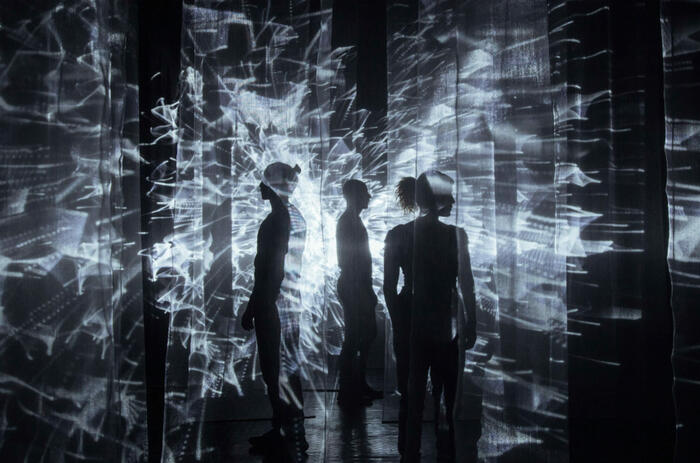
A few decades ago, the art utopia consisted of incorporating the viewer into the work, either physically or sensorially. Frank Popper called these practices with the term "participation art".
FROM PARTICIPATION TO IMMERSION
A few decades ago, the art utopia consisted of incorporating the viewer into the work, either physically or sensorially. Frank Popper called these practices with the term "participation art".

A few decades ago, the art utopia consisted of incorporating the viewer into the work, either physically or sensorially. Frank Popper called these practices with the term "participation art".
FROM PARTICIPATION TO IMMERSION
A few decades ago, the art utopia consisted of incorporating the viewer into the work, either physically or sensorially. Frank Popper called these practices with the term "participation art".
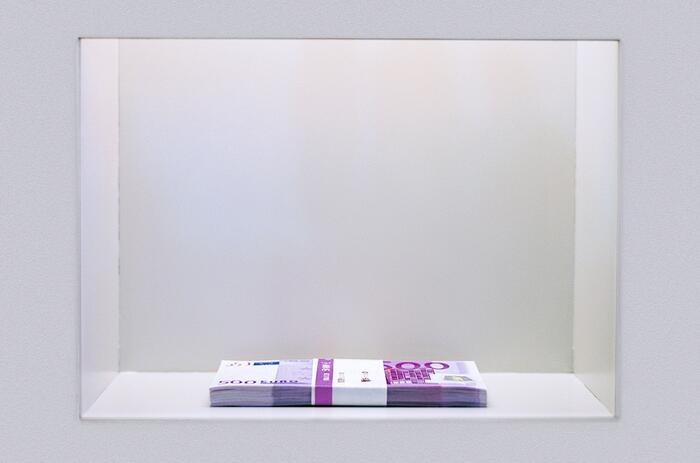
The German Pavilion at the 59th International Art Exhibition—la Biennale di Venezia in 2022 will feature the artist Maria Eichhorn. By choosing Eichhorn, who was born in Bamberg in 1962 and lives in Berlin, the curator Yilmaz Dziewior has decided in favor of an internationally highly recognized artist known as much for her conceptual approach as for her subtle sense of humor. With her visually minimal gestures, spatial interventions, and process-based works, Eichhorn critically examines institutional power structures and political and economic interrelationships.
GERMAN PAVILION AT THE 59TH VENICE BIENNALE: A QUESTION ON PAVILIONS THEMSELVES
The German Pavilion at the 59th International Art Exhibition—la Biennale di Venezia in 2022 will feature the artist Maria Eichhorn. By choosing Eichhorn, who was born in Bamberg in 1962 and lives in Berlin, the curator Yilmaz Dziewior has decided in favor of an internationally highly recognized artist known as much for her conceptual approach as for her subtle sense of humor. With her visually minimal gestures, spatial interventions, and process-based works, Eichhorn critically examines institutional power structures and political and economic interrelationships.
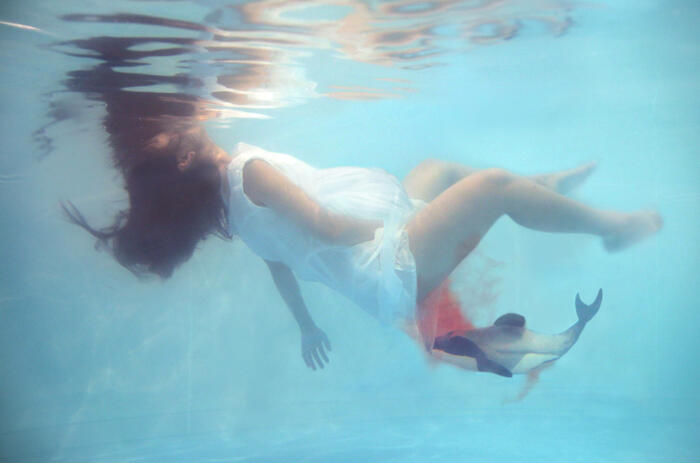
Stockholm syndrome occurs when a victim establishes an emotional bond with their captors. With motherhood many women feel like this: their life is no longer theirs and escaping is impossible. However, the kidnappers are not the daughters or the sons. The perpetrator is the patriarchal system that, under the story of love, hides the tasks that sustain life while exploiting them. The works exhibited here reveal motherhood as a disputed concept. On one side is the violence of labor and legal demands; on the other, the struggles that intertwine like a tide around the need for reproductive rights and care strategies that escape capitalist accumulation. This is an example of the enormous political power of motherhood.
MUAC EXHIBITS “MOTHERING. BETWEEN STOCKHOLM SYNDROME AND ACTS OF PRODUCTION”
Stockholm syndrome occurs when a victim establishes an emotional bond with their captors. With motherhood many women feel like this: their life is no longer theirs and escaping is impossible. However, the kidnappers are not the daughters or the sons. The perpetrator is the patriarchal system that, under the story of love, hides the tasks that sustain life while exploiting them. The works exhibited here reveal motherhood as a disputed concept. On one side is the violence of labor and legal demands; on the other, the struggles that intertwine like a tide around the need for reproductive rights and care strategies that escape capitalist accumulation. This is an example of the enormous political power of motherhood.
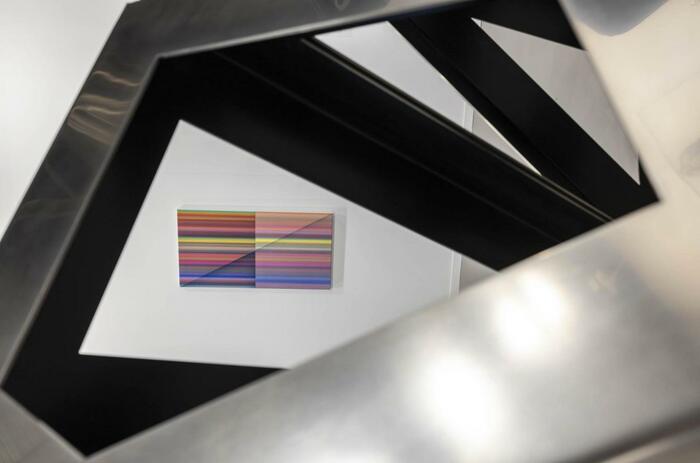
ARCOmadrid, organized by IFEMA MADRID, closed its 40+1 Anniversary on Sunday with a commercial balance described by the participating galleries as very positive. The attractive presentation of galleries and artistic programs that have made up the contents of this edition have attracted a global figure of 75,000 visitors, among which were 30,000 art professionals.
CONCLUSIONS FROM ARCOmadrid AND THE EUROPEAN REACTIVATION
ARCOmadrid, organized by IFEMA MADRID, closed its 40+1 Anniversary on Sunday with a commercial balance described by the participating galleries as very positive. The attractive presentation of galleries and artistic programs that have made up the contents of this edition have attracted a global figure of 75,000 visitors, among which were 30,000 art professionals.

This exhibition, curated by Vanessa K. Davidson, Ph.D. and co-organized by the Phoenix Art Museum and the Blanton Museum of Art, is the first retrospective of Colombian artist Oscar Muñoz's work in the United States
THE BLANTON MUSEUM EXHIBITS “INVISIBILIA” BY OSCAR MUÑOZ
This exhibition, curated by Vanessa K. Davidson, Ph.D. and co-organized by the Phoenix Art Museum and the Blanton Museum of Art, is the first retrospective of Colombian artist Oscar Muñoz's work in the United States

Kunsthalle Lissabon presents Tactiles, the first solo show in Portugal by the Costa Rican artist Federico Herrero.
THE SHAPES OF COLOR AS PRESENTED BY FEDERICO HERRERO
Kunsthalle Lissabon presents Tactiles, the first solo show in Portugal by the Costa Rican artist Federico Herrero.
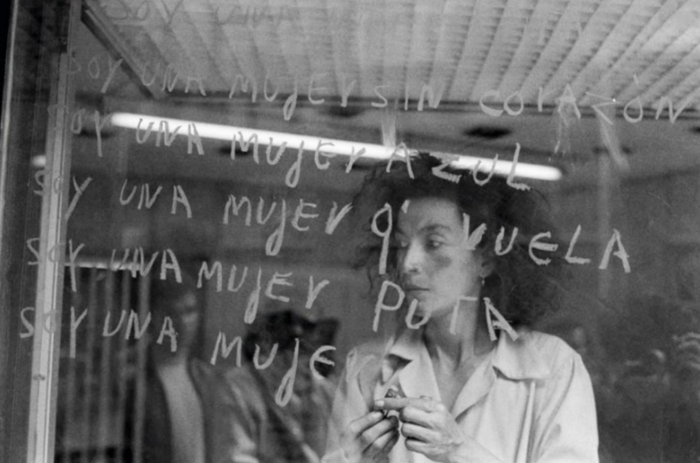
The Museum of Modern Art of Medellín (MAMM) exhibits María Teresa Hincapié. Si este fuera un principio de infinito (María Teresa Hincapié. If this were a principle of infinity), the first institutional exhibition dedicated to the practice of Colombian artist María Teresa Hincapié (Armenia, 1954 – Bogotá, 2008). A pioneer in Colombia and Latin America, Hincapié had a very particular definition of the performative discipline that she used to call “training” and which resisted any specific categorization; rather, it oscillated between life, creation in motion and the search for the sacred.
MEDELLÍN - FIRST MUSEUM RETROSPECTIVE EXHIBITION OF MARÍA TERESA HINCAPIÉ
The Museum of Modern Art of Medellín (MAMM) exhibits María Teresa Hincapié. Si este fuera un principio de infinito (María Teresa Hincapié. If this were a principle of infinity), the first institutional exhibition dedicated to the practice of Colombian artist María Teresa Hincapié (Armenia, 1954 – Bogotá, 2008). A pioneer in Colombia and Latin America, Hincapié had a very particular definition of the performative discipline that she used to call “training” and which resisted any specific categorization; rather, it oscillated between life, creation in motion and the search for the sacred.
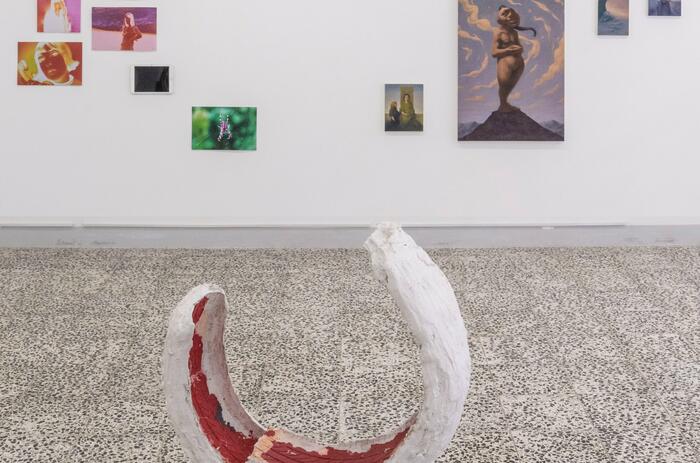
Located on the border between La Latina and Embajadores neighbourhoods, inside a 60’s trade complex, El Chico is one of the main spaces of the emerging scene that is occupying Madrid’s centre. Space is just a general and practical nomenclature. Founder and director Javier Aparicio (Mexico 1985) explains that the limits of this project are not that important, but if we insist on defining it: "El Chico is, for now, a Podcast with a space," he explains. "The podcast has become an approximation tool for visitors.”
‘EL CHICO' LABORATORY OF THE NEW GENERATION - INTERVIEW WITH JAVIER APARICIO
Located on the border between La Latina and Embajadores neighbourhoods, inside a 60’s trade complex, El Chico is one of the main spaces of the emerging scene that is occupying Madrid’s centre. Space is just a general and practical nomenclature. Founder and director Javier Aparicio (Mexico 1985) explains that the limits of this project are not that important, but if we insist on defining it: "El Chico is, for now, a Podcast with a space," he explains. "The podcast has become an approximation tool for visitors.”

A few decades ago, the art utopia consisted of incorporating the viewer into the work, either physically or sensorially. Frank Popper called these practices with the term "participation art".
FROM PARTICIPATION TO IMMERSION
A few decades ago, the art utopia consisted of incorporating the viewer into the work, either physically or sensorially. Frank Popper called these practices with the term "participation art".

The German Pavilion at the 59th International Art Exhibition—la Biennale di Venezia in 2022 will feature the artist Maria Eichhorn. By choosing Eichhorn, who was born in Bamberg in 1962 and lives in Berlin, the curator Yilmaz Dziewior has decided in favor of an internationally highly recognized artist known as much for her conceptual approach as for her subtle sense of humor. With her visually minimal gestures, spatial interventions, and process-based works, Eichhorn critically examines institutional power structures and political and economic interrelationships.
GERMAN PAVILION AT THE 59TH VENICE BIENNALE: A QUESTION ON PAVILIONS THEMSELVES
The German Pavilion at the 59th International Art Exhibition—la Biennale di Venezia in 2022 will feature the artist Maria Eichhorn. By choosing Eichhorn, who was born in Bamberg in 1962 and lives in Berlin, the curator Yilmaz Dziewior has decided in favor of an internationally highly recognized artist known as much for her conceptual approach as for her subtle sense of humor. With her visually minimal gestures, spatial interventions, and process-based works, Eichhorn critically examines institutional power structures and political and economic interrelationships.

Stockholm syndrome occurs when a victim establishes an emotional bond with their captors. With motherhood many women feel like this: their life is no longer theirs and escaping is impossible. However, the kidnappers are not the daughters or the sons. The perpetrator is the patriarchal system that, under the story of love, hides the tasks that sustain life while exploiting them. The works exhibited here reveal motherhood as a disputed concept. On one side is the violence of labor and legal demands; on the other, the struggles that intertwine like a tide around the need for reproductive rights and care strategies that escape capitalist accumulation. This is an example of the enormous political power of motherhood.
MUAC EXHIBITS “MOTHERING. BETWEEN STOCKHOLM SYNDROME AND ACTS OF PRODUCTION”
Stockholm syndrome occurs when a victim establishes an emotional bond with their captors. With motherhood many women feel like this: their life is no longer theirs and escaping is impossible. However, the kidnappers are not the daughters or the sons. The perpetrator is the patriarchal system that, under the story of love, hides the tasks that sustain life while exploiting them. The works exhibited here reveal motherhood as a disputed concept. On one side is the violence of labor and legal demands; on the other, the struggles that intertwine like a tide around the need for reproductive rights and care strategies that escape capitalist accumulation. This is an example of the enormous political power of motherhood.

ARCOmadrid, organized by IFEMA MADRID, closed its 40+1 Anniversary on Sunday with a commercial balance described by the participating galleries as very positive. The attractive presentation of galleries and artistic programs that have made up the contents of this edition have attracted a global figure of 75,000 visitors, among which were 30,000 art professionals.
CONCLUSIONS FROM ARCOmadrid AND THE EUROPEAN REACTIVATION
ARCOmadrid, organized by IFEMA MADRID, closed its 40+1 Anniversary on Sunday with a commercial balance described by the participating galleries as very positive. The attractive presentation of galleries and artistic programs that have made up the contents of this edition have attracted a global figure of 75,000 visitors, among which were 30,000 art professionals.

This exhibition, curated by Vanessa K. Davidson, Ph.D. and co-organized by the Phoenix Art Museum and the Blanton Museum of Art, is the first retrospective of Colombian artist Oscar Muñoz's work in the United States
THE BLANTON MUSEUM EXHIBITS “INVISIBILIA” BY OSCAR MUÑOZ
This exhibition, curated by Vanessa K. Davidson, Ph.D. and co-organized by the Phoenix Art Museum and the Blanton Museum of Art, is the first retrospective of Colombian artist Oscar Muñoz's work in the United States

Kunsthalle Lissabon presents Tactiles, the first solo show in Portugal by the Costa Rican artist Federico Herrero.
THE SHAPES OF COLOR AS PRESENTED BY FEDERICO HERRERO
Kunsthalle Lissabon presents Tactiles, the first solo show in Portugal by the Costa Rican artist Federico Herrero.

The Museum of Modern Art of Medellín (MAMM) exhibits María Teresa Hincapié. Si este fuera un principio de infinito (María Teresa Hincapié. If this were a principle of infinity), the first institutional exhibition dedicated to the practice of Colombian artist María Teresa Hincapié (Armenia, 1954 – Bogotá, 2008). A pioneer in Colombia and Latin America, Hincapié had a very particular definition of the performative discipline that she used to call “training” and which resisted any specific categorization; rather, it oscillated between life, creation in motion and the search for the sacred.
MEDELLÍN - FIRST MUSEUM RETROSPECTIVE EXHIBITION OF MARÍA TERESA HINCAPIÉ
The Museum of Modern Art of Medellín (MAMM) exhibits María Teresa Hincapié. Si este fuera un principio de infinito (María Teresa Hincapié. If this were a principle of infinity), the first institutional exhibition dedicated to the practice of Colombian artist María Teresa Hincapié (Armenia, 1954 – Bogotá, 2008). A pioneer in Colombia and Latin America, Hincapié had a very particular definition of the performative discipline that she used to call “training” and which resisted any specific categorization; rather, it oscillated between life, creation in motion and the search for the sacred.

Located on the border between La Latina and Embajadores neighbourhoods, inside a 60’s trade complex, El Chico is one of the main spaces of the emerging scene that is occupying Madrid’s centre. Space is just a general and practical nomenclature. Founder and director Javier Aparicio (Mexico 1985) explains that the limits of this project are not that important, but if we insist on defining it: "El Chico is, for now, a Podcast with a space," he explains. "The podcast has become an approximation tool for visitors.”
‘EL CHICO' LABORATORY OF THE NEW GENERATION - INTERVIEW WITH JAVIER APARICIO
Located on the border between La Latina and Embajadores neighbourhoods, inside a 60’s trade complex, El Chico is one of the main spaces of the emerging scene that is occupying Madrid’s centre. Space is just a general and practical nomenclature. Founder and director Javier Aparicio (Mexico 1985) explains that the limits of this project are not that important, but if we insist on defining it: "El Chico is, for now, a Podcast with a space," he explains. "The podcast has become an approximation tool for visitors.”

A few decades ago, the art utopia consisted of incorporating the viewer into the work, either physically or sensorially. Frank Popper called these practices with the term "participation art".
FROM PARTICIPATION TO IMMERSION
A few decades ago, the art utopia consisted of incorporating the viewer into the work, either physically or sensorially. Frank Popper called these practices with the term "participation art".

The German Pavilion at the 59th International Art Exhibition—la Biennale di Venezia in 2022 will feature the artist Maria Eichhorn. By choosing Eichhorn, who was born in Bamberg in 1962 and lives in Berlin, the curator Yilmaz Dziewior has decided in favor of an internationally highly recognized artist known as much for her conceptual approach as for her subtle sense of humor. With her visually minimal gestures, spatial interventions, and process-based works, Eichhorn critically examines institutional power structures and political and economic interrelationships.
GERMAN PAVILION AT THE 59TH VENICE BIENNALE: A QUESTION ON PAVILIONS THEMSELVES
The German Pavilion at the 59th International Art Exhibition—la Biennale di Venezia in 2022 will feature the artist Maria Eichhorn. By choosing Eichhorn, who was born in Bamberg in 1962 and lives in Berlin, the curator Yilmaz Dziewior has decided in favor of an internationally highly recognized artist known as much for her conceptual approach as for her subtle sense of humor. With her visually minimal gestures, spatial interventions, and process-based works, Eichhorn critically examines institutional power structures and political and economic interrelationships.

Stockholm syndrome occurs when a victim establishes an emotional bond with their captors. With motherhood many women feel like this: their life is no longer theirs and escaping is impossible. However, the kidnappers are not the daughters or the sons. The perpetrator is the patriarchal system that, under the story of love, hides the tasks that sustain life while exploiting them. The works exhibited here reveal motherhood as a disputed concept. On one side is the violence of labor and legal demands; on the other, the struggles that intertwine like a tide around the need for reproductive rights and care strategies that escape capitalist accumulation. This is an example of the enormous political power of motherhood.
MUAC EXHIBITS “MOTHERING. BETWEEN STOCKHOLM SYNDROME AND ACTS OF PRODUCTION”
Stockholm syndrome occurs when a victim establishes an emotional bond with their captors. With motherhood many women feel like this: their life is no longer theirs and escaping is impossible. However, the kidnappers are not the daughters or the sons. The perpetrator is the patriarchal system that, under the story of love, hides the tasks that sustain life while exploiting them. The works exhibited here reveal motherhood as a disputed concept. On one side is the violence of labor and legal demands; on the other, the struggles that intertwine like a tide around the need for reproductive rights and care strategies that escape capitalist accumulation. This is an example of the enormous political power of motherhood.

ARCOmadrid, organized by IFEMA MADRID, closed its 40+1 Anniversary on Sunday with a commercial balance described by the participating galleries as very positive. The attractive presentation of galleries and artistic programs that have made up the contents of this edition have attracted a global figure of 75,000 visitors, among which were 30,000 art professionals.
CONCLUSIONS FROM ARCOmadrid AND THE EUROPEAN REACTIVATION
ARCOmadrid, organized by IFEMA MADRID, closed its 40+1 Anniversary on Sunday with a commercial balance described by the participating galleries as very positive. The attractive presentation of galleries and artistic programs that have made up the contents of this edition have attracted a global figure of 75,000 visitors, among which were 30,000 art professionals.

This exhibition, curated by Vanessa K. Davidson, Ph.D. and co-organized by the Phoenix Art Museum and the Blanton Museum of Art, is the first retrospective of Colombian artist Oscar Muñoz's work in the United States
THE BLANTON MUSEUM EXHIBITS “INVISIBILIA” BY OSCAR MUÑOZ
This exhibition, curated by Vanessa K. Davidson, Ph.D. and co-organized by the Phoenix Art Museum and the Blanton Museum of Art, is the first retrospective of Colombian artist Oscar Muñoz's work in the United States

Kunsthalle Lissabon presents Tactiles, the first solo show in Portugal by the Costa Rican artist Federico Herrero.
THE SHAPES OF COLOR AS PRESENTED BY FEDERICO HERRERO
Kunsthalle Lissabon presents Tactiles, the first solo show in Portugal by the Costa Rican artist Federico Herrero.

The Museum of Modern Art of Medellín (MAMM) exhibits María Teresa Hincapié. Si este fuera un principio de infinito (María Teresa Hincapié. If this were a principle of infinity), the first institutional exhibition dedicated to the practice of Colombian artist María Teresa Hincapié (Armenia, 1954 – Bogotá, 2008). A pioneer in Colombia and Latin America, Hincapié had a very particular definition of the performative discipline that she used to call “training” and which resisted any specific categorization; rather, it oscillated between life, creation in motion and the search for the sacred.
MEDELLÍN - FIRST MUSEUM RETROSPECTIVE EXHIBITION OF MARÍA TERESA HINCAPIÉ
The Museum of Modern Art of Medellín (MAMM) exhibits María Teresa Hincapié. Si este fuera un principio de infinito (María Teresa Hincapié. If this were a principle of infinity), the first institutional exhibition dedicated to the practice of Colombian artist María Teresa Hincapié (Armenia, 1954 – Bogotá, 2008). A pioneer in Colombia and Latin America, Hincapié had a very particular definition of the performative discipline that she used to call “training” and which resisted any specific categorization; rather, it oscillated between life, creation in motion and the search for the sacred.

Located on the border between La Latina and Embajadores neighbourhoods, inside a 60’s trade complex, El Chico is one of the main spaces of the emerging scene that is occupying Madrid’s centre. Space is just a general and practical nomenclature. Founder and director Javier Aparicio (Mexico 1985) explains that the limits of this project are not that important, but if we insist on defining it: "El Chico is, for now, a Podcast with a space," he explains. "The podcast has become an approximation tool for visitors.”
‘EL CHICO' LABORATORY OF THE NEW GENERATION - INTERVIEW WITH JAVIER APARICIO
Located on the border between La Latina and Embajadores neighbourhoods, inside a 60’s trade complex, El Chico is one of the main spaces of the emerging scene that is occupying Madrid’s centre. Space is just a general and practical nomenclature. Founder and director Javier Aparicio (Mexico 1985) explains that the limits of this project are not that important, but if we insist on defining it: "El Chico is, for now, a Podcast with a space," he explains. "The podcast has become an approximation tool for visitors.”

A few decades ago, the art utopia consisted of incorporating the viewer into the work, either physically or sensorially. Frank Popper called these practices with the term "participation art".
FROM PARTICIPATION TO IMMERSION
A few decades ago, the art utopia consisted of incorporating the viewer into the work, either physically or sensorially. Frank Popper called these practices with the term "participation art".

The German Pavilion at the 59th International Art Exhibition—la Biennale di Venezia in 2022 will feature the artist Maria Eichhorn. By choosing Eichhorn, who was born in Bamberg in 1962 and lives in Berlin, the curator Yilmaz Dziewior has decided in favor of an internationally highly recognized artist known as much for her conceptual approach as for her subtle sense of humor. With her visually minimal gestures, spatial interventions, and process-based works, Eichhorn critically examines institutional power structures and political and economic interrelationships.
GERMAN PAVILION AT THE 59TH VENICE BIENNALE: A QUESTION ON PAVILIONS THEMSELVES
The German Pavilion at the 59th International Art Exhibition—la Biennale di Venezia in 2022 will feature the artist Maria Eichhorn. By choosing Eichhorn, who was born in Bamberg in 1962 and lives in Berlin, the curator Yilmaz Dziewior has decided in favor of an internationally highly recognized artist known as much for her conceptual approach as for her subtle sense of humor. With her visually minimal gestures, spatial interventions, and process-based works, Eichhorn critically examines institutional power structures and political and economic interrelationships.

Stockholm syndrome occurs when a victim establishes an emotional bond with their captors. With motherhood many women feel like this: their life is no longer theirs and escaping is impossible. However, the kidnappers are not the daughters or the sons. The perpetrator is the patriarchal system that, under the story of love, hides the tasks that sustain life while exploiting them. The works exhibited here reveal motherhood as a disputed concept. On one side is the violence of labor and legal demands; on the other, the struggles that intertwine like a tide around the need for reproductive rights and care strategies that escape capitalist accumulation. This is an example of the enormous political power of motherhood.
MUAC EXHIBITS “MOTHERING. BETWEEN STOCKHOLM SYNDROME AND ACTS OF PRODUCTION”
Stockholm syndrome occurs when a victim establishes an emotional bond with their captors. With motherhood many women feel like this: their life is no longer theirs and escaping is impossible. However, the kidnappers are not the daughters or the sons. The perpetrator is the patriarchal system that, under the story of love, hides the tasks that sustain life while exploiting them. The works exhibited here reveal motherhood as a disputed concept. On one side is the violence of labor and legal demands; on the other, the struggles that intertwine like a tide around the need for reproductive rights and care strategies that escape capitalist accumulation. This is an example of the enormous political power of motherhood.

ARCOmadrid, organized by IFEMA MADRID, closed its 40+1 Anniversary on Sunday with a commercial balance described by the participating galleries as very positive. The attractive presentation of galleries and artistic programs that have made up the contents of this edition have attracted a global figure of 75,000 visitors, among which were 30,000 art professionals.
CONCLUSIONS FROM ARCOmadrid AND THE EUROPEAN REACTIVATION
ARCOmadrid, organized by IFEMA MADRID, closed its 40+1 Anniversary on Sunday with a commercial balance described by the participating galleries as very positive. The attractive presentation of galleries and artistic programs that have made up the contents of this edition have attracted a global figure of 75,000 visitors, among which were 30,000 art professionals.

This exhibition, curated by Vanessa K. Davidson, Ph.D. and co-organized by the Phoenix Art Museum and the Blanton Museum of Art, is the first retrospective of Colombian artist Oscar Muñoz's work in the United States
THE BLANTON MUSEUM EXHIBITS “INVISIBILIA” BY OSCAR MUÑOZ
This exhibition, curated by Vanessa K. Davidson, Ph.D. and co-organized by the Phoenix Art Museum and the Blanton Museum of Art, is the first retrospective of Colombian artist Oscar Muñoz's work in the United States

Kunsthalle Lissabon presents Tactiles, the first solo show in Portugal by the Costa Rican artist Federico Herrero.
THE SHAPES OF COLOR AS PRESENTED BY FEDERICO HERRERO
Kunsthalle Lissabon presents Tactiles, the first solo show in Portugal by the Costa Rican artist Federico Herrero.

The Museum of Modern Art of Medellín (MAMM) exhibits María Teresa Hincapié. Si este fuera un principio de infinito (María Teresa Hincapié. If this were a principle of infinity), the first institutional exhibition dedicated to the practice of Colombian artist María Teresa Hincapié (Armenia, 1954 – Bogotá, 2008). A pioneer in Colombia and Latin America, Hincapié had a very particular definition of the performative discipline that she used to call “training” and which resisted any specific categorization; rather, it oscillated between life, creation in motion and the search for the sacred.
MEDELLÍN - FIRST MUSEUM RETROSPECTIVE EXHIBITION OF MARÍA TERESA HINCAPIÉ
The Museum of Modern Art of Medellín (MAMM) exhibits María Teresa Hincapié. Si este fuera un principio de infinito (María Teresa Hincapié. If this were a principle of infinity), the first institutional exhibition dedicated to the practice of Colombian artist María Teresa Hincapié (Armenia, 1954 – Bogotá, 2008). A pioneer in Colombia and Latin America, Hincapié had a very particular definition of the performative discipline that she used to call “training” and which resisted any specific categorization; rather, it oscillated between life, creation in motion and the search for the sacred.

Located on the border between La Latina and Embajadores neighbourhoods, inside a 60’s trade complex, El Chico is one of the main spaces of the emerging scene that is occupying Madrid’s centre. Space is just a general and practical nomenclature. Founder and director Javier Aparicio (Mexico 1985) explains that the limits of this project are not that important, but if we insist on defining it: "El Chico is, for now, a Podcast with a space," he explains. "The podcast has become an approximation tool for visitors.”
‘EL CHICO' LABORATORY OF THE NEW GENERATION - INTERVIEW WITH JAVIER APARICIO
Located on the border between La Latina and Embajadores neighbourhoods, inside a 60’s trade complex, El Chico is one of the main spaces of the emerging scene that is occupying Madrid’s centre. Space is just a general and practical nomenclature. Founder and director Javier Aparicio (Mexico 1985) explains that the limits of this project are not that important, but if we insist on defining it: "El Chico is, for now, a Podcast with a space," he explains. "The podcast has become an approximation tool for visitors.”

A few decades ago, the art utopia consisted of incorporating the viewer into the work, either physically or sensorially. Frank Popper called these practices with the term "participation art".
FROM PARTICIPATION TO IMMERSION
A few decades ago, the art utopia consisted of incorporating the viewer into the work, either physically or sensorially. Frank Popper called these practices with the term "participation art".

The German Pavilion at the 59th International Art Exhibition—la Biennale di Venezia in 2022 will feature the artist Maria Eichhorn. By choosing Eichhorn, who was born in Bamberg in 1962 and lives in Berlin, the curator Yilmaz Dziewior has decided in favor of an internationally highly recognized artist known as much for her conceptual approach as for her subtle sense of humor. With her visually minimal gestures, spatial interventions, and process-based works, Eichhorn critically examines institutional power structures and political and economic interrelationships.
GERMAN PAVILION AT THE 59TH VENICE BIENNALE: A QUESTION ON PAVILIONS THEMSELVES
The German Pavilion at the 59th International Art Exhibition—la Biennale di Venezia in 2022 will feature the artist Maria Eichhorn. By choosing Eichhorn, who was born in Bamberg in 1962 and lives in Berlin, the curator Yilmaz Dziewior has decided in favor of an internationally highly recognized artist known as much for her conceptual approach as for her subtle sense of humor. With her visually minimal gestures, spatial interventions, and process-based works, Eichhorn critically examines institutional power structures and political and economic interrelationships.

Stockholm syndrome occurs when a victim establishes an emotional bond with their captors. With motherhood many women feel like this: their life is no longer theirs and escaping is impossible. However, the kidnappers are not the daughters or the sons. The perpetrator is the patriarchal system that, under the story of love, hides the tasks that sustain life while exploiting them. The works exhibited here reveal motherhood as a disputed concept. On one side is the violence of labor and legal demands; on the other, the struggles that intertwine like a tide around the need for reproductive rights and care strategies that escape capitalist accumulation. This is an example of the enormous political power of motherhood.
MUAC EXHIBITS “MOTHERING. BETWEEN STOCKHOLM SYNDROME AND ACTS OF PRODUCTION”
Stockholm syndrome occurs when a victim establishes an emotional bond with their captors. With motherhood many women feel like this: their life is no longer theirs and escaping is impossible. However, the kidnappers are not the daughters or the sons. The perpetrator is the patriarchal system that, under the story of love, hides the tasks that sustain life while exploiting them. The works exhibited here reveal motherhood as a disputed concept. On one side is the violence of labor and legal demands; on the other, the struggles that intertwine like a tide around the need for reproductive rights and care strategies that escape capitalist accumulation. This is an example of the enormous political power of motherhood.

ARCOmadrid, organized by IFEMA MADRID, closed its 40+1 Anniversary on Sunday with a commercial balance described by the participating galleries as very positive. The attractive presentation of galleries and artistic programs that have made up the contents of this edition have attracted a global figure of 75,000 visitors, among which were 30,000 art professionals.
CONCLUSIONS FROM ARCOmadrid AND THE EUROPEAN REACTIVATION
ARCOmadrid, organized by IFEMA MADRID, closed its 40+1 Anniversary on Sunday with a commercial balance described by the participating galleries as very positive. The attractive presentation of galleries and artistic programs that have made up the contents of this edition have attracted a global figure of 75,000 visitors, among which were 30,000 art professionals.

This exhibition, curated by Vanessa K. Davidson, Ph.D. and co-organized by the Phoenix Art Museum and the Blanton Museum of Art, is the first retrospective of Colombian artist Oscar Muñoz's work in the United States
THE BLANTON MUSEUM EXHIBITS “INVISIBILIA” BY OSCAR MUÑOZ
This exhibition, curated by Vanessa K. Davidson, Ph.D. and co-organized by the Phoenix Art Museum and the Blanton Museum of Art, is the first retrospective of Colombian artist Oscar Muñoz's work in the United States

Kunsthalle Lissabon presents Tactiles, the first solo show in Portugal by the Costa Rican artist Federico Herrero.
THE SHAPES OF COLOR AS PRESENTED BY FEDERICO HERRERO
Kunsthalle Lissabon presents Tactiles, the first solo show in Portugal by the Costa Rican artist Federico Herrero.

The Museum of Modern Art of Medellín (MAMM) exhibits María Teresa Hincapié. Si este fuera un principio de infinito (María Teresa Hincapié. If this were a principle of infinity), the first institutional exhibition dedicated to the practice of Colombian artist María Teresa Hincapié (Armenia, 1954 – Bogotá, 2008). A pioneer in Colombia and Latin America, Hincapié had a very particular definition of the performative discipline that she used to call “training” and which resisted any specific categorization; rather, it oscillated between life, creation in motion and the search for the sacred.
MEDELLÍN - FIRST MUSEUM RETROSPECTIVE EXHIBITION OF MARÍA TERESA HINCAPIÉ
The Museum of Modern Art of Medellín (MAMM) exhibits María Teresa Hincapié. Si este fuera un principio de infinito (María Teresa Hincapié. If this were a principle of infinity), the first institutional exhibition dedicated to the practice of Colombian artist María Teresa Hincapié (Armenia, 1954 – Bogotá, 2008). A pioneer in Colombia and Latin America, Hincapié had a very particular definition of the performative discipline that she used to call “training” and which resisted any specific categorization; rather, it oscillated between life, creation in motion and the search for the sacred.

Located on the border between La Latina and Embajadores neighbourhoods, inside a 60’s trade complex, El Chico is one of the main spaces of the emerging scene that is occupying Madrid’s centre. Space is just a general and practical nomenclature. Founder and director Javier Aparicio (Mexico 1985) explains that the limits of this project are not that important, but if we insist on defining it: "El Chico is, for now, a Podcast with a space," he explains. "The podcast has become an approximation tool for visitors.”
‘EL CHICO' LABORATORY OF THE NEW GENERATION - INTERVIEW WITH JAVIER APARICIO
Located on the border between La Latina and Embajadores neighbourhoods, inside a 60’s trade complex, El Chico is one of the main spaces of the emerging scene that is occupying Madrid’s centre. Space is just a general and practical nomenclature. Founder and director Javier Aparicio (Mexico 1985) explains that the limits of this project are not that important, but if we insist on defining it: "El Chico is, for now, a Podcast with a space," he explains. "The podcast has become an approximation tool for visitors.”




